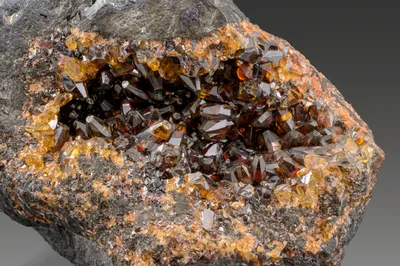Mineral Species
Thaumasite
Type Locality
No
Composition
Ca3Si(OH)6(SO4)(CO3)·12H2O
Crystal System
Hexagonal
Status at Tsumeb
Believed valid
Abundance
Extremely rare
Distribution
Second oxidation zone (?)
Paragenesis
Supergene
Entry Number
Species; TSNB349
General Notes
Thaumasite was first reported from Tsumeb by Bartelke (1976) citing a personal communication from Paul Keller of Stuttgart University describing the thaumasite as very thin, white, radiating layers on a germanite-renierite ore; Keller had identified the thaumasite on a specimen from the collection of Walter Kahn.
While thaumasite is considered extremely rare at Tsumeb, it is very easily overlooked.
Pinch and Wilson (1977) noted that thaumasite forms water-clear crystals in radiating groups with siderite on germanite-renierite ore.
Keller (1984) listed thaumasite as one of several minerals that occur in "decomposition cavities" (presumably in sulphide ores), apparently in isolation (i.e., without evidence of belonging to identified paragenetic sequences). He described thaumasite as "… very thin, shiny, water-clear to white crusts on a germanite-renierite mixed ore …" with the thaumasite crystals forming tent-shaped aggregates of sub-parallel to radially intergrown crystals.
Lombaard et al. (1986) included thaumasite as a "very rare" species in their listing of Tsumeb minerals.
Gebhard (1991, 1999) listed thaumasite as a "rare" mineral in his table of reported species but provided no further description.
Von Bezing et al. (2016) described thaumasite crystals from Tsumeb as acicular.
A specimen in the collection of Brent Thorne is illustrated on Mindat (mindat.org/photo-849728.html; accessed January 2022) in which clear, striated crystals of colourless thaumasite are associated with fleischerite on a quartz-germanite matrix. Both the fleischerite and the thaumasite have been verified by XRD.
Associated Minerals
fleischerite; germanite; renierite; siderite


